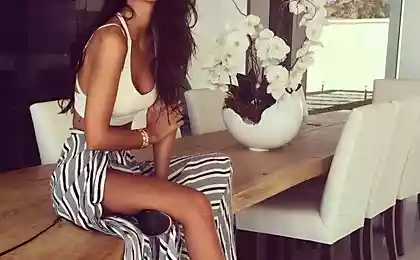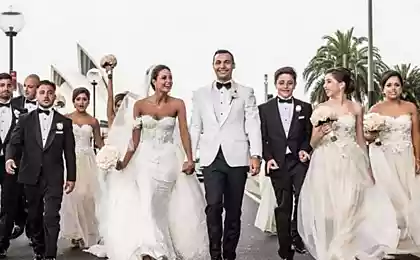645
Mustang - Lost Kingdom of Tibet
Sheltered in a remote area from curious crowds of tourists, the tiny former kingdom is quiet and mysterious life. The few travelers ventured to explore the land. Those who visited Mustang, will never forget the striking edge, full of mysteries and legends.
The fertile plain
Mustang (Montang or Moon Tan) - in Tibetan means "fertile plain." However, the name is misleading. Take a glance the neighborhood and before you open parched earth and the mountains.
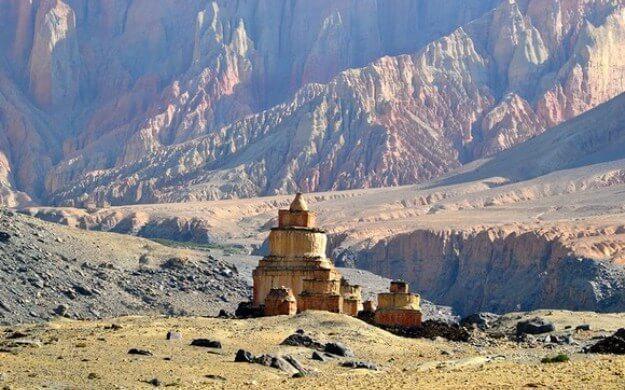
No, the Mustang is not included in the list of top tourist attraction, offering five-star hotels and restaurants. You will not find pools with sun loungers and beauties in bikinis, languidly sipping exotic cocktails. The surface gloss and hubbub of glamorous resorts yet bypass the harsh and beautiful corner side.
Today Mustang - one of the administrative units of Nepal, located in the north of the country. Until recently this region was the kingdom. In 2008, Nepal declared a republic, and the Mustang became a member state. However, the King of Mustang still retains some power.
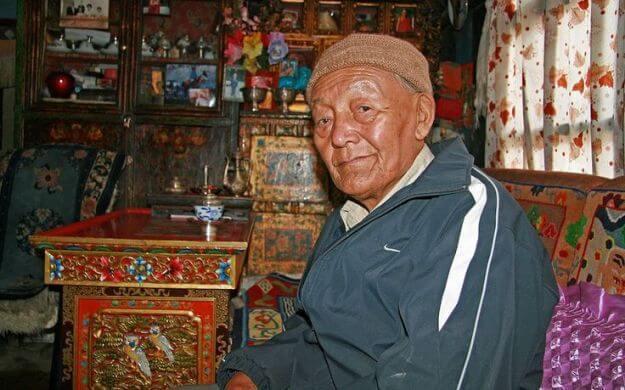
Jigme Bista Palbar - the last king of Mustang
Like the palace itself, most of the buildings are distinguished modesty. The only decoration - colorful scraps of fabric that flutter in the wind, protecting the inhabitants of the houses. This prayer flags that Buddhists are used as amulets. The colors are chosen not by chance, everyone has his value. White carries a force of winds and air, green symbolizes water, red - a flame of fire, yellow gives protection of the earth, and blue - the sky. According to legend, the first prayer flags were established by the Buddha himself.

Royal Palace (where he still resides a former governor) does not hit the magnificent facade. He looks like an old little house: dilapidated wooden doors and walls battered time
. Focused Power
For centuries, Nepal and Tibet are known in the circle of people seeking spiritual peace and enlightenment. Nicholas Roerich - the greatest explorer of the Himalayas, believed that the Mustang is a one of the sacred places of power, which descends the energy of the cosmos. The primitive beauty of this land captivated scientist. Not surprisingly, the Roerich again and again portrayed bizarre mountain on his canvases. It should be mentally thank him for it. Not all of us afford to see firsthand how sunsets and sunrises are playing paint on the slopes of the Himalayas.
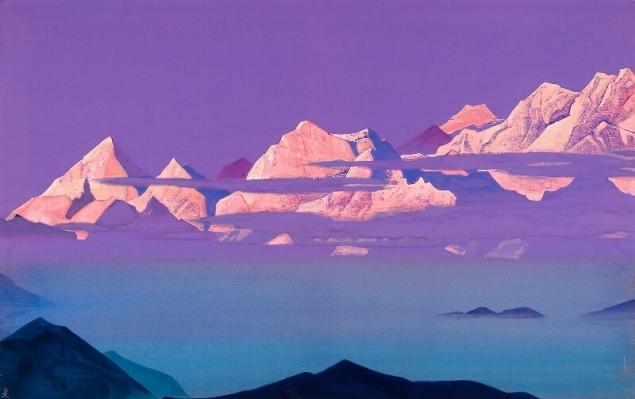
Not only Roerich attracted mysterious aura of these lands. Michel Peissel - French anthropologist and writer also studied the neighborhood. In 1967, Michel has published a book "Mustang: Lost Kingdom of Tibet," which told of his extraordinary journey through the mysterious lands. Book immediately gained worldwide fame and became a bestseller that has drawn attention to the kingdom.
However, until the 90-ies of the last century to get into the Mustang was not so easy, for it required special permission. For this reason, the kingdom called
«forbidden». Measured way of life affected the manners of the inhabitants of the Mustang. Pessel himself he recalled how sometimes restrain overflowing negative emotions, so characteristic for us (and so unusual for the local population).
"One day I pounced on farmer ... He was surprised to look at my face and said:
- You are such a learned man. Really dark peasant could cause your anger?
It was a good lesson .... »
M. Pessel
Legends of the Lost World
Celestial cave
Of course, the history of the ancient kingdom overgrown with legends. One of the legends says that it is the birthplace of the Buddha's Mustang.
Strange landscape also found reflection in parables.
On the territory of the Mustang are thousands of man-made caves carved into the cliffs. Celestial cave in Nepal - a poetic name they got all over the world. Who created them and why?
The elders say that the Mustang lands once lived wisest tribe in the world. However, the ancient sages in mortal danger, so they left their homes, finding refuge deep underground. And the cave - the entrance to the underworld.
Demon Blood

The reddish hue - a characteristic feature of the rocky landscape
. The parable says that a long time ago evil demon destroyed the sacred monastery. Brave monster guru banished to the mountains, where a fierce battle broke out. Guru killed the demon, whose blood flowed on the slopes, coloring it with a crimson color.
Modern life is slowly but surely changing the face of the Mustang. The new authorities are trying to develop tourism. Perhaps, restaurants will soon appear near the mysterious caves (if not in the caves themselves), and a string of young tourists are photographed on a background of shrines to quickly post it unusual pictures in social networks.

Turmoil distort the proud loneliness of the Mustang. Yet, to remain in this place mysterious charm and the unique spirit of the ancient lost kingdom.
The fertile plain
Mustang (Montang or Moon Tan) - in Tibetan means "fertile plain." However, the name is misleading. Take a glance the neighborhood and before you open parched earth and the mountains.

No, the Mustang is not included in the list of top tourist attraction, offering five-star hotels and restaurants. You will not find pools with sun loungers and beauties in bikinis, languidly sipping exotic cocktails. The surface gloss and hubbub of glamorous resorts yet bypass the harsh and beautiful corner side.
Today Mustang - one of the administrative units of Nepal, located in the north of the country. Until recently this region was the kingdom. In 2008, Nepal declared a republic, and the Mustang became a member state. However, the King of Mustang still retains some power.

Jigme Bista Palbar - the last king of Mustang
Like the palace itself, most of the buildings are distinguished modesty. The only decoration - colorful scraps of fabric that flutter in the wind, protecting the inhabitants of the houses. This prayer flags that Buddhists are used as amulets. The colors are chosen not by chance, everyone has his value. White carries a force of winds and air, green symbolizes water, red - a flame of fire, yellow gives protection of the earth, and blue - the sky. According to legend, the first prayer flags were established by the Buddha himself.

Royal Palace (where he still resides a former governor) does not hit the magnificent facade. He looks like an old little house: dilapidated wooden doors and walls battered time
. Focused Power
For centuries, Nepal and Tibet are known in the circle of people seeking spiritual peace and enlightenment. Nicholas Roerich - the greatest explorer of the Himalayas, believed that the Mustang is a one of the sacred places of power, which descends the energy of the cosmos. The primitive beauty of this land captivated scientist. Not surprisingly, the Roerich again and again portrayed bizarre mountain on his canvases. It should be mentally thank him for it. Not all of us afford to see firsthand how sunsets and sunrises are playing paint on the slopes of the Himalayas.

Not only Roerich attracted mysterious aura of these lands. Michel Peissel - French anthropologist and writer also studied the neighborhood. In 1967, Michel has published a book "Mustang: Lost Kingdom of Tibet," which told of his extraordinary journey through the mysterious lands. Book immediately gained worldwide fame and became a bestseller that has drawn attention to the kingdom.
However, until the 90-ies of the last century to get into the Mustang was not so easy, for it required special permission. For this reason, the kingdom called
«forbidden». Measured way of life affected the manners of the inhabitants of the Mustang. Pessel himself he recalled how sometimes restrain overflowing negative emotions, so characteristic for us (and so unusual for the local population).
"One day I pounced on farmer ... He was surprised to look at my face and said:
- You are such a learned man. Really dark peasant could cause your anger?
It was a good lesson .... »
M. Pessel
Legends of the Lost World
Celestial cave
Of course, the history of the ancient kingdom overgrown with legends. One of the legends says that it is the birthplace of the Buddha's Mustang.
Strange landscape also found reflection in parables.
On the territory of the Mustang are thousands of man-made caves carved into the cliffs. Celestial cave in Nepal - a poetic name they got all over the world. Who created them and why?
The elders say that the Mustang lands once lived wisest tribe in the world. However, the ancient sages in mortal danger, so they left their homes, finding refuge deep underground. And the cave - the entrance to the underworld.
Demon Blood

The reddish hue - a characteristic feature of the rocky landscape
. The parable says that a long time ago evil demon destroyed the sacred monastery. Brave monster guru banished to the mountains, where a fierce battle broke out. Guru killed the demon, whose blood flowed on the slopes, coloring it with a crimson color.
Modern life is slowly but surely changing the face of the Mustang. The new authorities are trying to develop tourism. Perhaps, restaurants will soon appear near the mysterious caves (if not in the caves themselves), and a string of young tourists are photographed on a background of shrines to quickly post it unusual pictures in social networks.

Turmoil distort the proud loneliness of the Mustang. Yet, to remain in this place mysterious charm and the unique spirit of the ancient lost kingdom.
Each woman is free to grow as she pleases
Jennifer Aniston: picky with which society values the woman, absurd




















